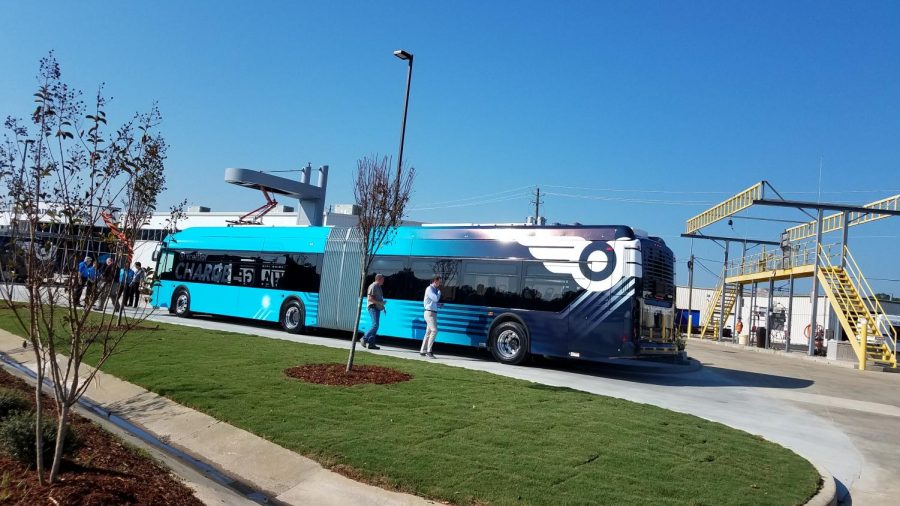First Level-4 Autonomous Heavy-Duty Bus
“Xcelsior Charge XE60 On-Route Charging Demo” by Metro Atlanta Transit Productions is licensed under CC BY-SA 2.0
At the end of January, 2021, New Flyer, a leading company in the production of transit buses, released the first level-4 autonomous transit bus. The bus was named New Flyer Xcelsior AV, and is powered with electricity. Level-4 means that there is a driver present to take over if necessary, but the bus is capable of completing all operations on its own under normal circumstances. New Flyer hopes to put the bus into fixed-route service later this year in bus-only lanes in Connecticut, though the bus would initially be limited to a maximum speed 12.5 miles per hour to ensure safe operations.
The 40-foot heavy-duty transit bus is capable of transporting 80 passengers, and the non-autonomous version is one of the most popular buses in North America. Years of research by various companies and billions of dollars of investments have lead to New Flyer’s bus, which is currently the most advanced autonomous bus. The bus is covered in cameras, laser lidar sensors, and radar technology. This allows the bus to be aware of its surroundings at all times, no matter the weather or time of day. In many ways, operating an autonomous transit bus is simpler that a car: it always runs on the same route and can be programmed to simply follow that route according to the schedule. Buses still face the challenges of any other autonomous vehicle, which is making them safe for pedestrians, bikers, and other drivers. Even though the computer can handle driving the bus, the bus operator’s other tasks are harder to take over: enforcing fare collection, dealing with passengers, reporting to dispatchers, deviating from routes or schedules at the command of dispatchers, and navigating conditions like closed roads and construction. For these reasons, a driver is still needed.
The Xcelsior AV is expected to make conditions safer for pedestrians and other vehicles, which could lead to a decrease in accidents and vehicle maintenance. The bus is programmed to send live road-condition reports to other vehicles which could improve performance in a fleet consisting of autonomous buses. Autonomous technology is expected to make the movement of the bus smoother by regulating the speed of acceleration and deceleration and by regulating the distance the bus stops from the curve. These buses allow for groups, or platoons, of buses to operate in a row as one unit. This could allow for smoother operations as having single buses every five minutes often get bunched, while a three-bus platoon every fifteen minutes is more likely to operate on time.
New Flyer’s Xcelsior AV may not be the final answer in autonomous transportation, but it is a huge leap forward. It is capable of removing human error and regulating operations to make the driving of the bus smoother and safer. It can lower maintenance work and increase the lifespan of the bus by reducing wear and tear on the bus. It cannot, however, fully operate the bus because a human operator is needed to deal with unusual situations and all passenger-related dealings. Later this year, when testing begins in Connecticut, the feasibility of this bus and the future of this technology will become clearer, but until then this piece of cutting-edge technology is an encouraging sign for the future of driverless vehicles.
Related Stories:
https://newatlas.com/urban-transport/new-flyer-xcelsior-av-level-4-autonomous-transit-bus/
https://cleantechnica.com/2021/02/02/new-flyer-xcelsior-av-is-americas-first-autonomous-bus/















